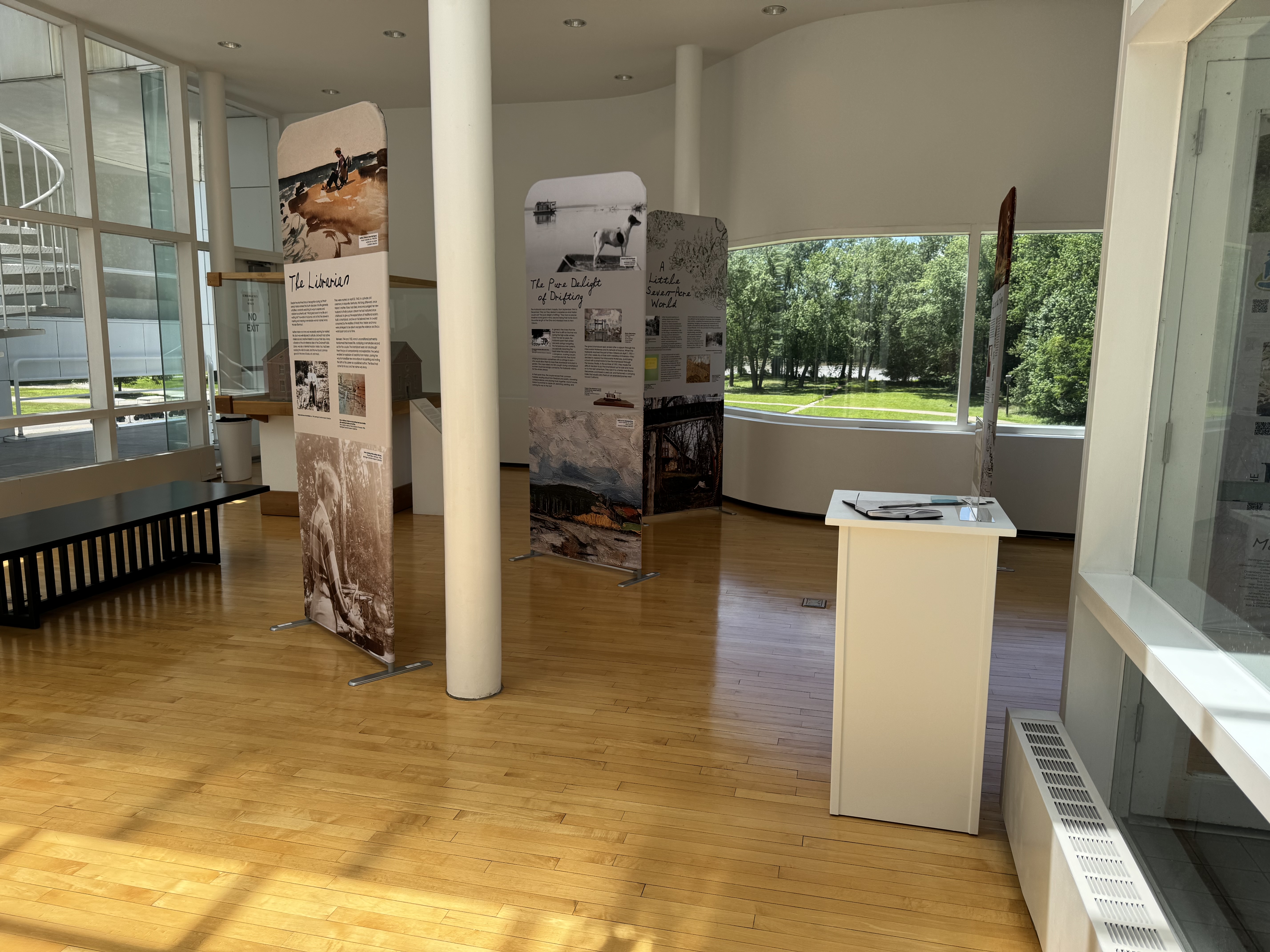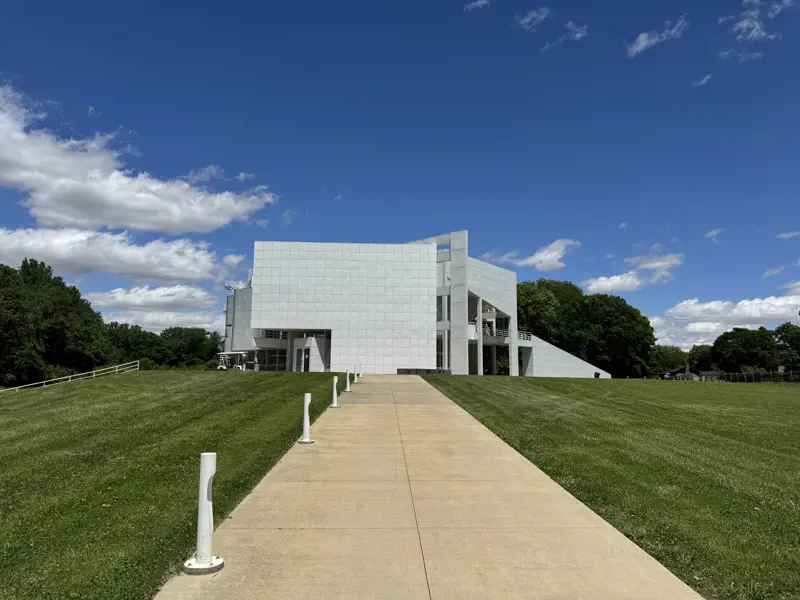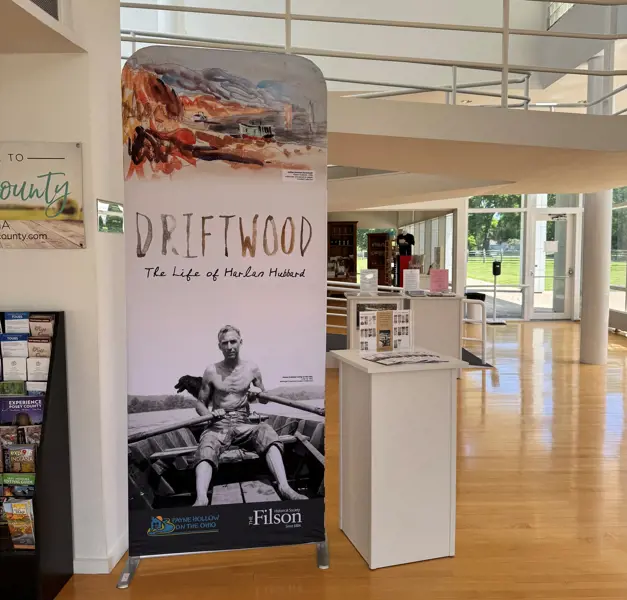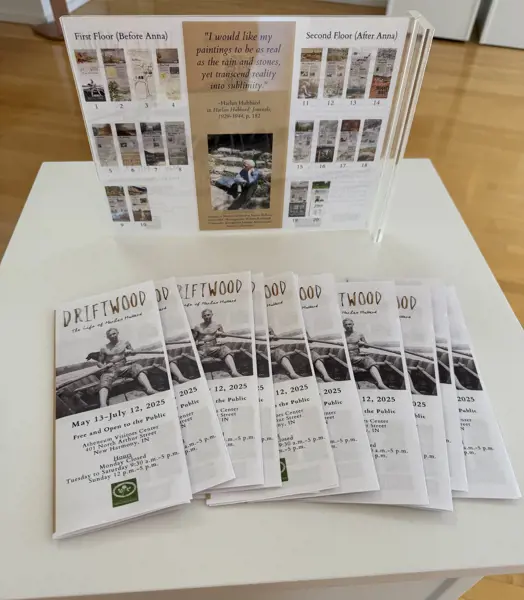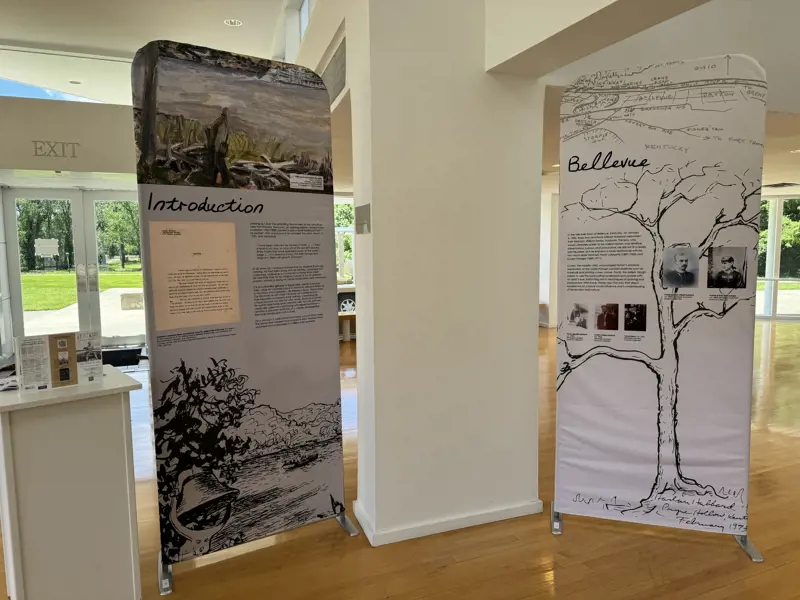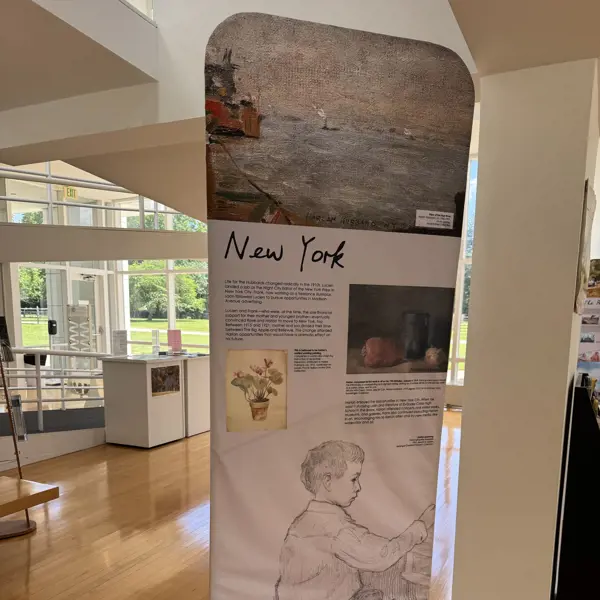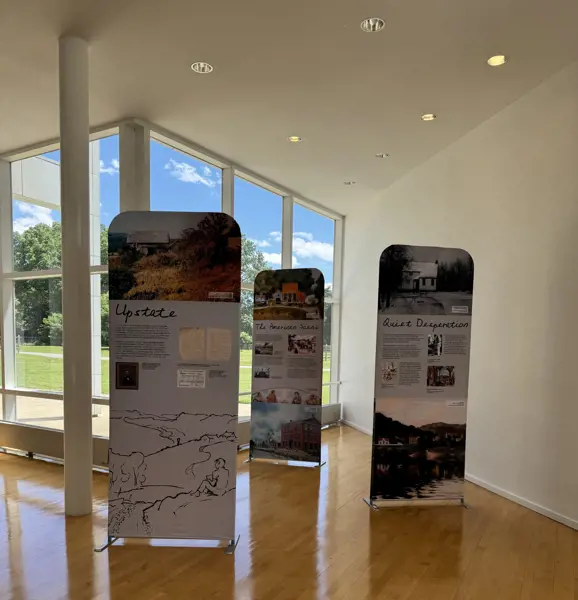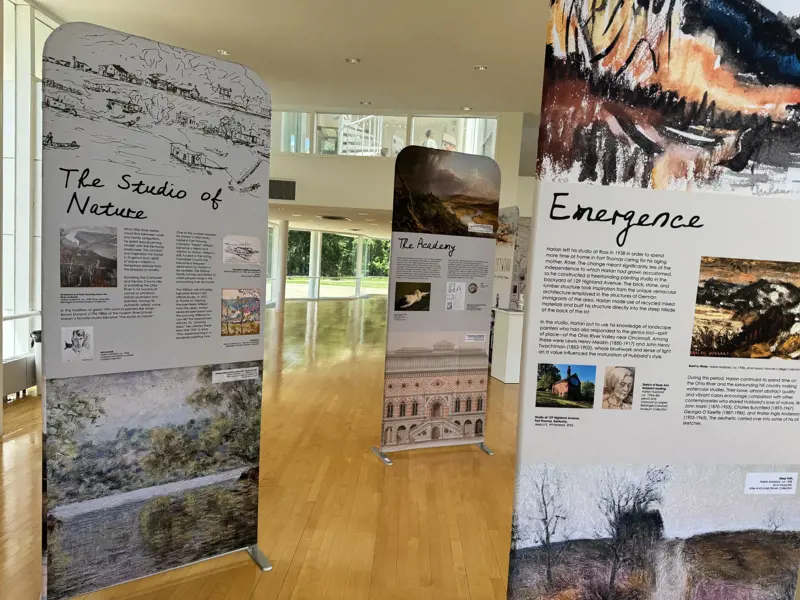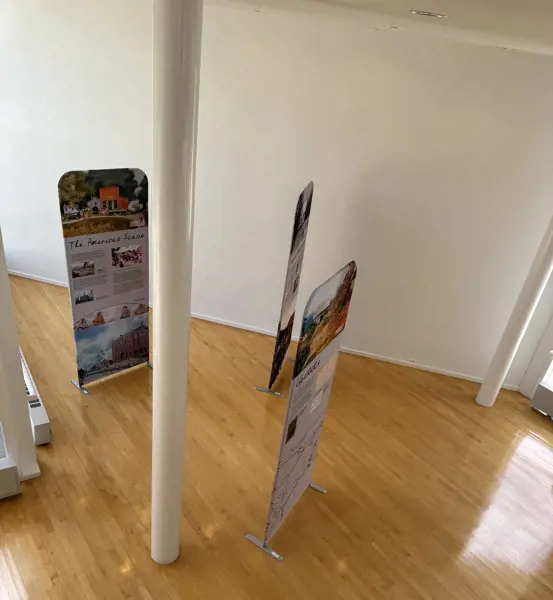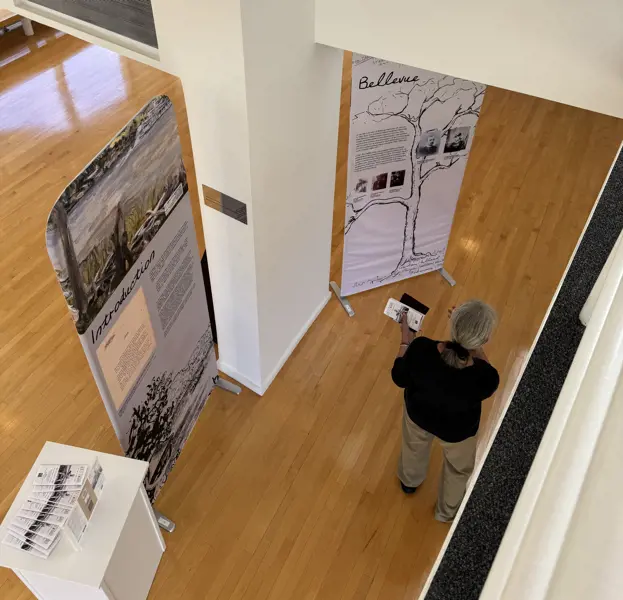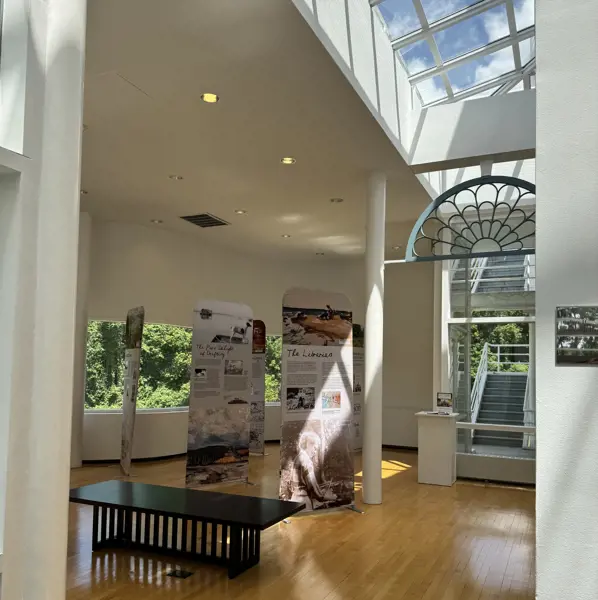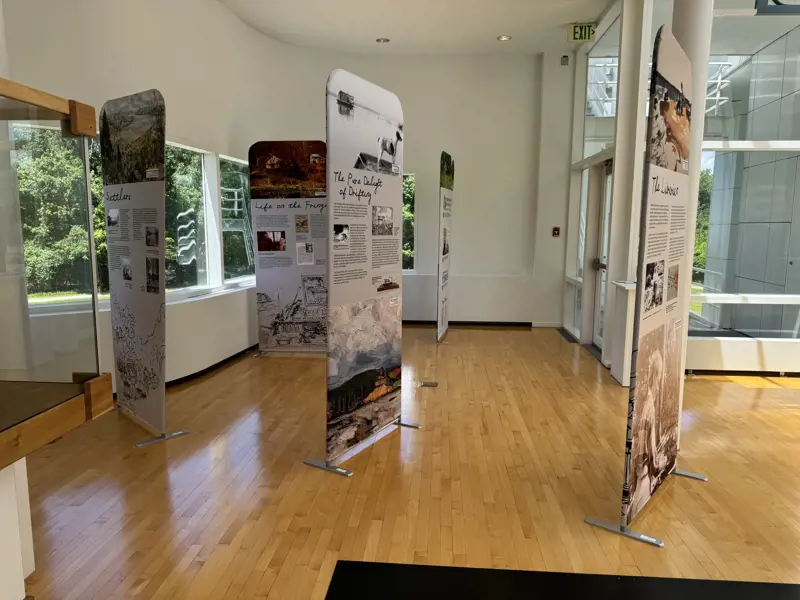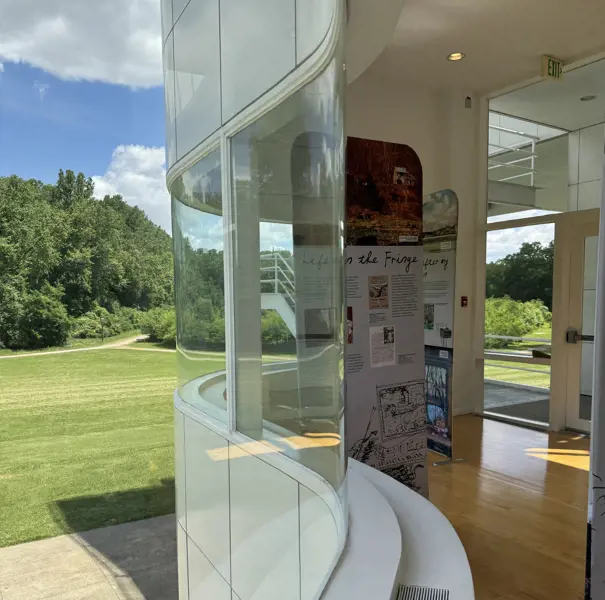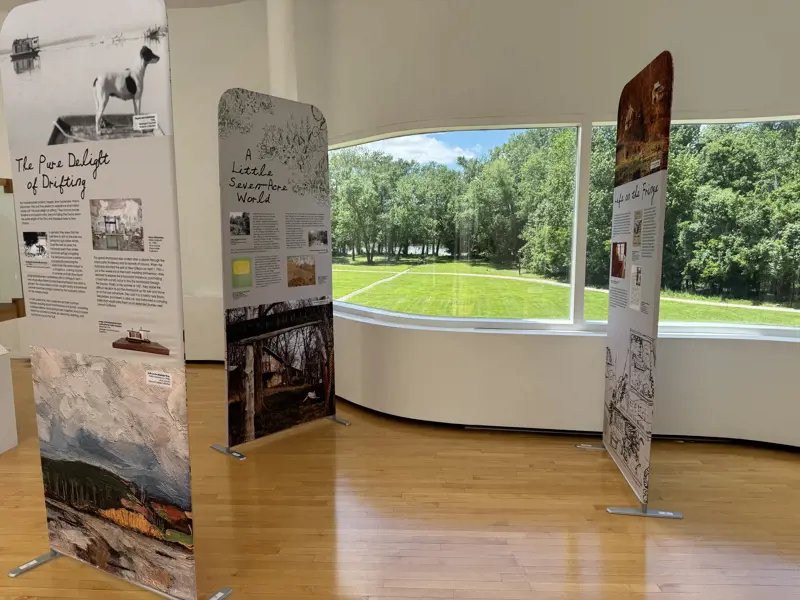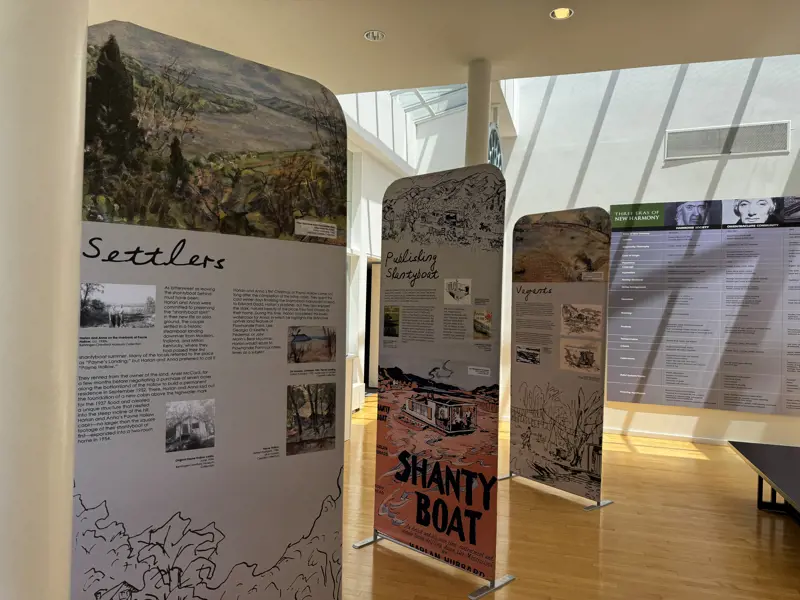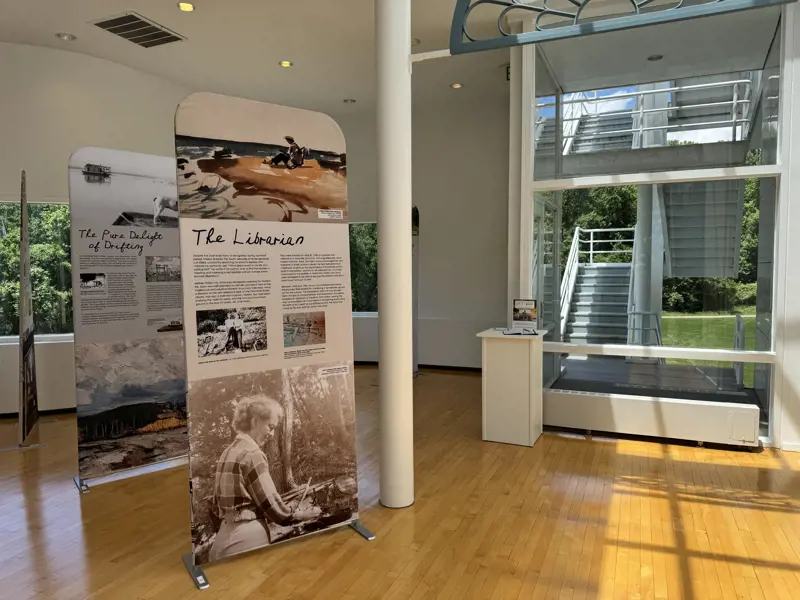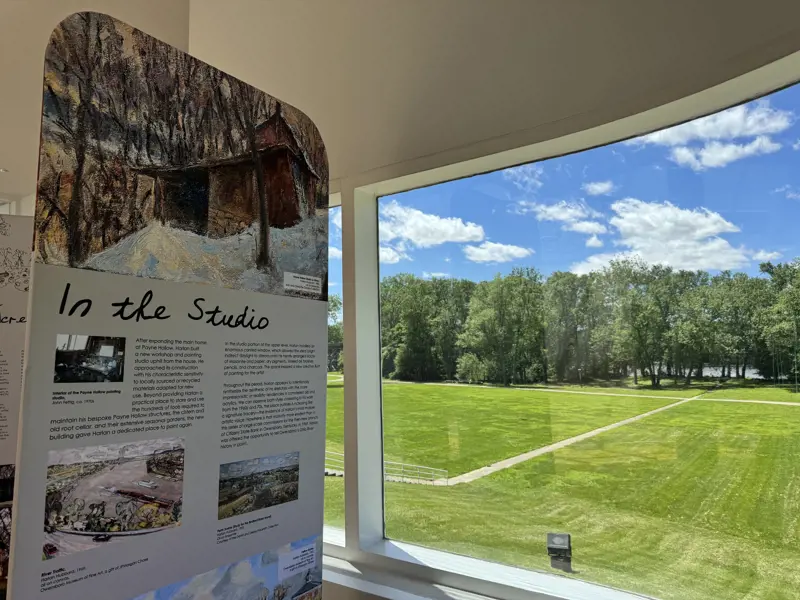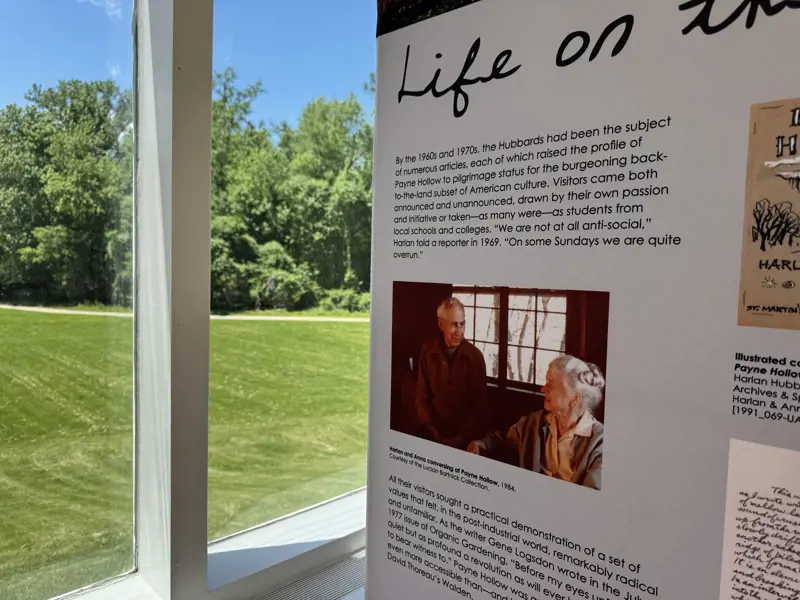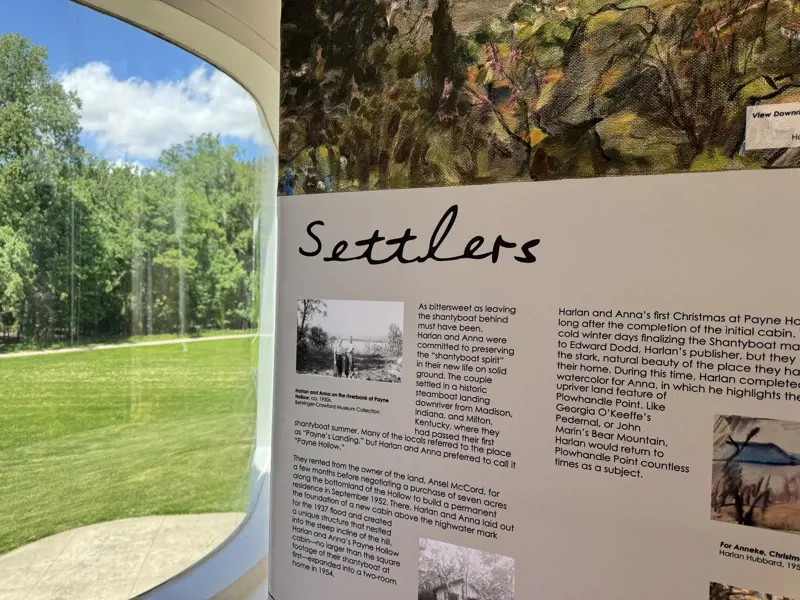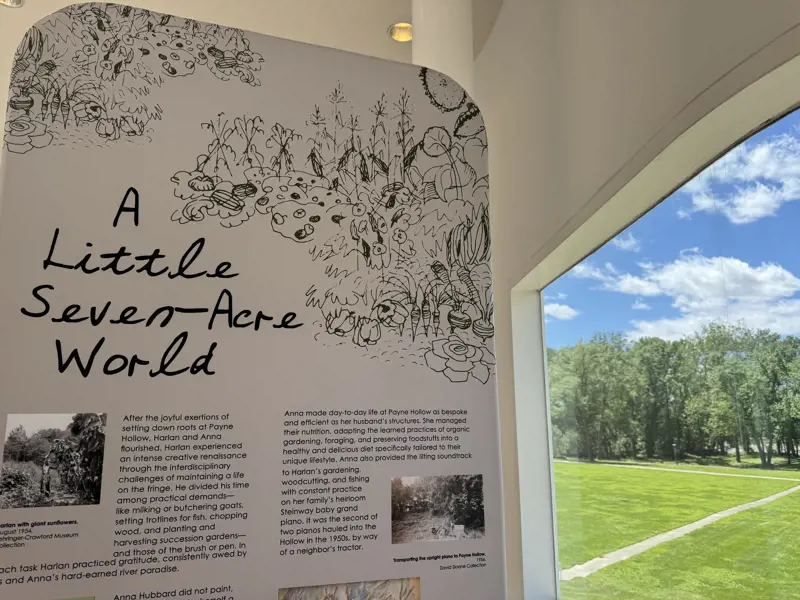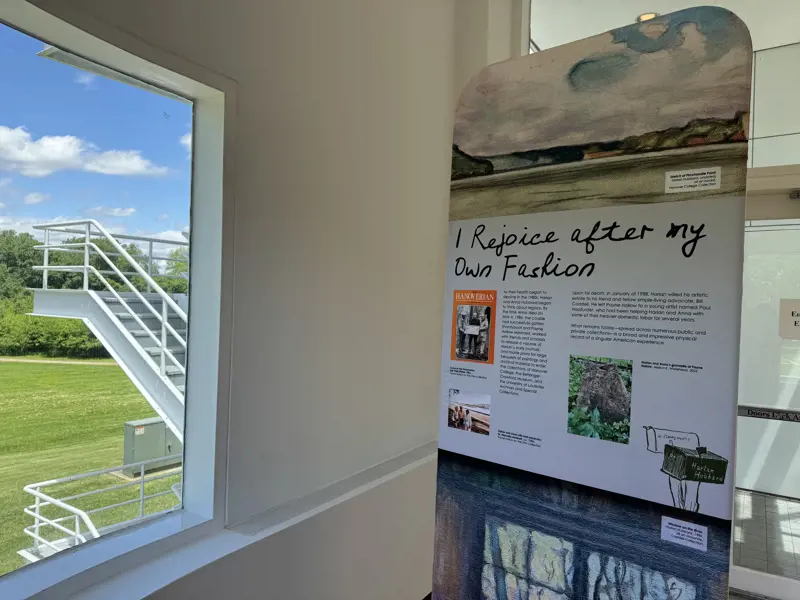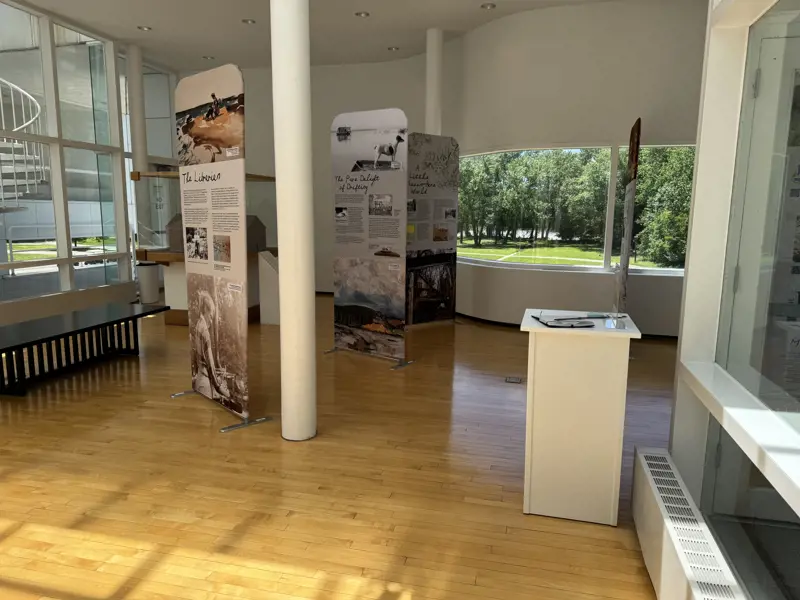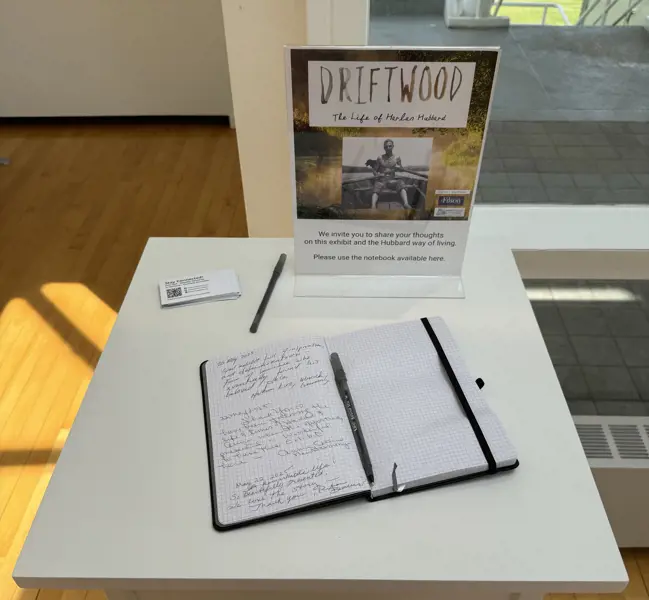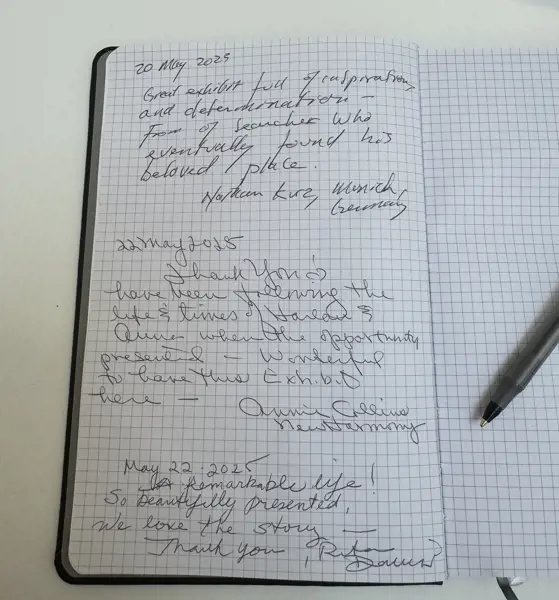Exhibit Layout
Driftwood: The Life of Harlan Hubbard consists of ten double-sided, printed fabric panels. Each freestanding panel contains artwork, historic photographs, and the essential narrative of the biography, Driftwood: The Life of Harlan Hubbard, by Jessica K. Whitehead.
In order to accommodate restrictions in the Atheneum's space, Historic New Harmony staff chose to divide the exhibit into two sections: Before Anna and After Anna. Harlan Hubbard's life was radically transformed by his relationship with Anna Eikenhout, whom he married in 1943 and found to be a perfect life companion as each pursued their own intellectual and creative interests. It seemed right to reflect this transformation in the layout of the exhibit. All of the Before Anna panels are located on the first level of the Atheneum while the After Anna panels are on the second level.
Visitors may also notice that their movement physically through the exhibit resembles the flow of river water, which does not move in a straight line but meanders and swirls. Starting on the first level of the Atheneum at the title panel, visitors circle around a column and two panels as they read about Harlan Hubbard's childhood and his family's move from northern Kentucky to New York City. As visitors reach the panels across the room that describe Hubbard's teenage years and early artistic career, they may find themselves zigzagging between the more closely spaced panels. This reflects the sharp alterations in the course of Hubbard's life as he read Henry David Thoreau's Walden for the first time, worked as a farm laborer in Upstate New York, started formally studying art, and then was forced to leave New York City to move back to northern Kentucky in order to support his mother.
As visitors then go up the Atheneum's ramp to the second part of the exhibit, they may connect their physical movement "climbing" an incline and navigating the ramp's turns to Hubbard's journey in finding ways to live authentically and achieve creative fulfillment.
Reaching the top of the ramp, visitors find themselves in a light-filled gallery, facing a panel with the title, "The Librarian," and a photo of Anna Eikenhout Hubbard. In this smaller space, there is a beautiful view of the Wabash River through a glass window that echoes the curve of the river outside. As visitors move through the exhibit, they meander between the panels without the zigzagging motion from before. Reaching the panel titled, "Settlers," visitors read about the Hubbards' purchase of their final home, Payne Hollow, on the shore of the Ohio River. The rest of the panels closely follow the curve of the window/river, symbolizing the Hubbards' attachment to place and their quiet and steady life. Before leaving the exhibit, visitors have the opportunity to leave comments about the exhibit and the "Hubbard way of living" in a notebook on a pedestal.
